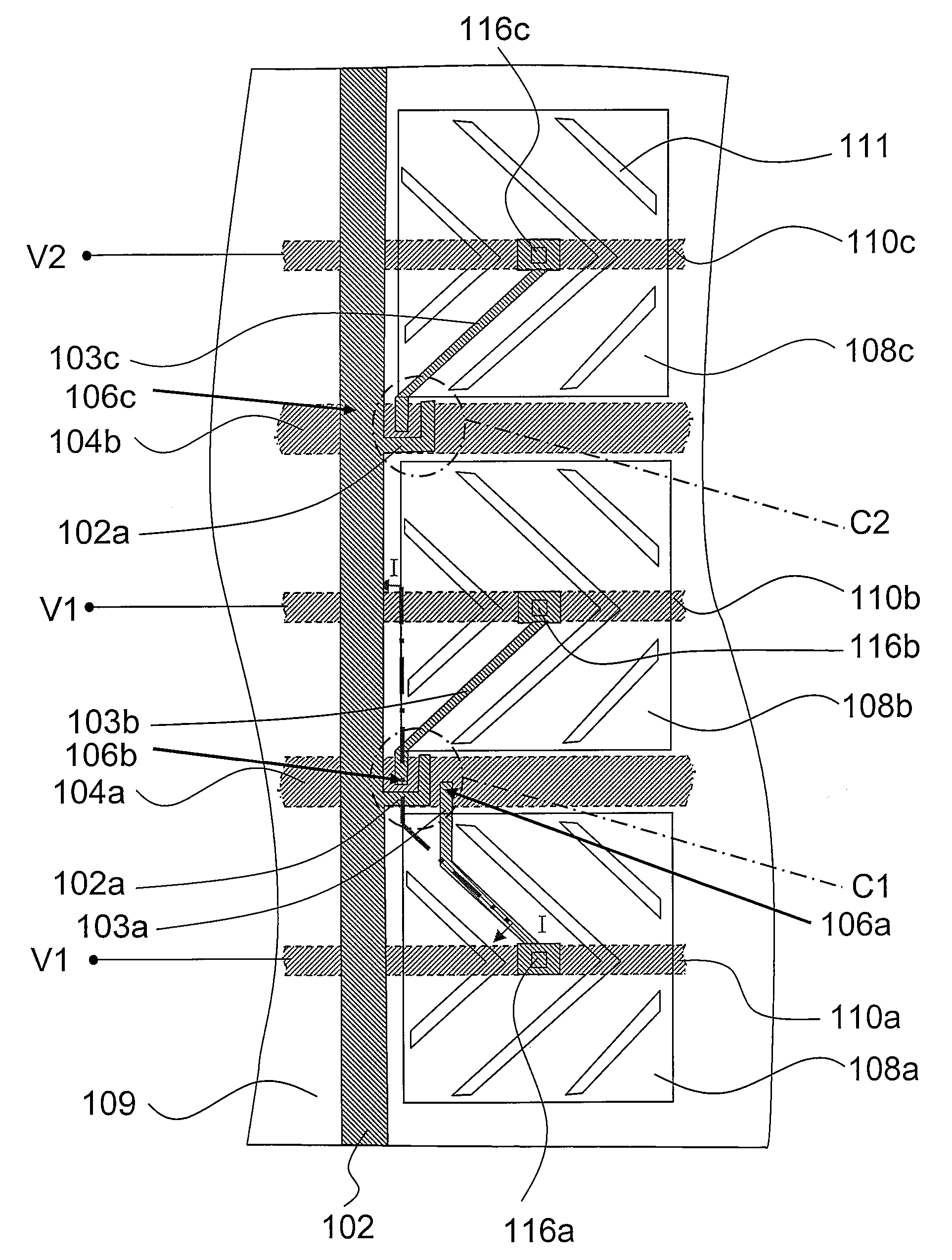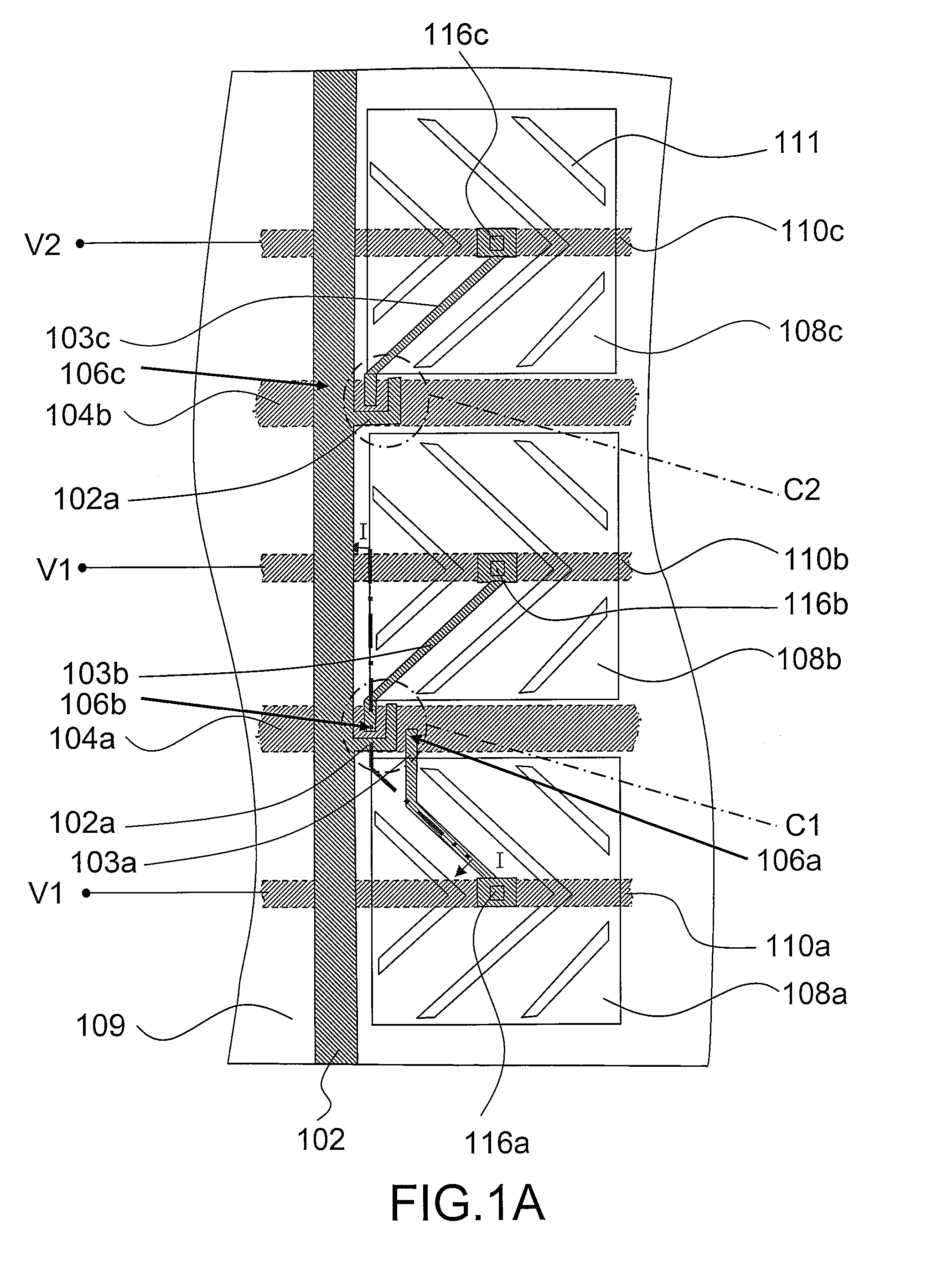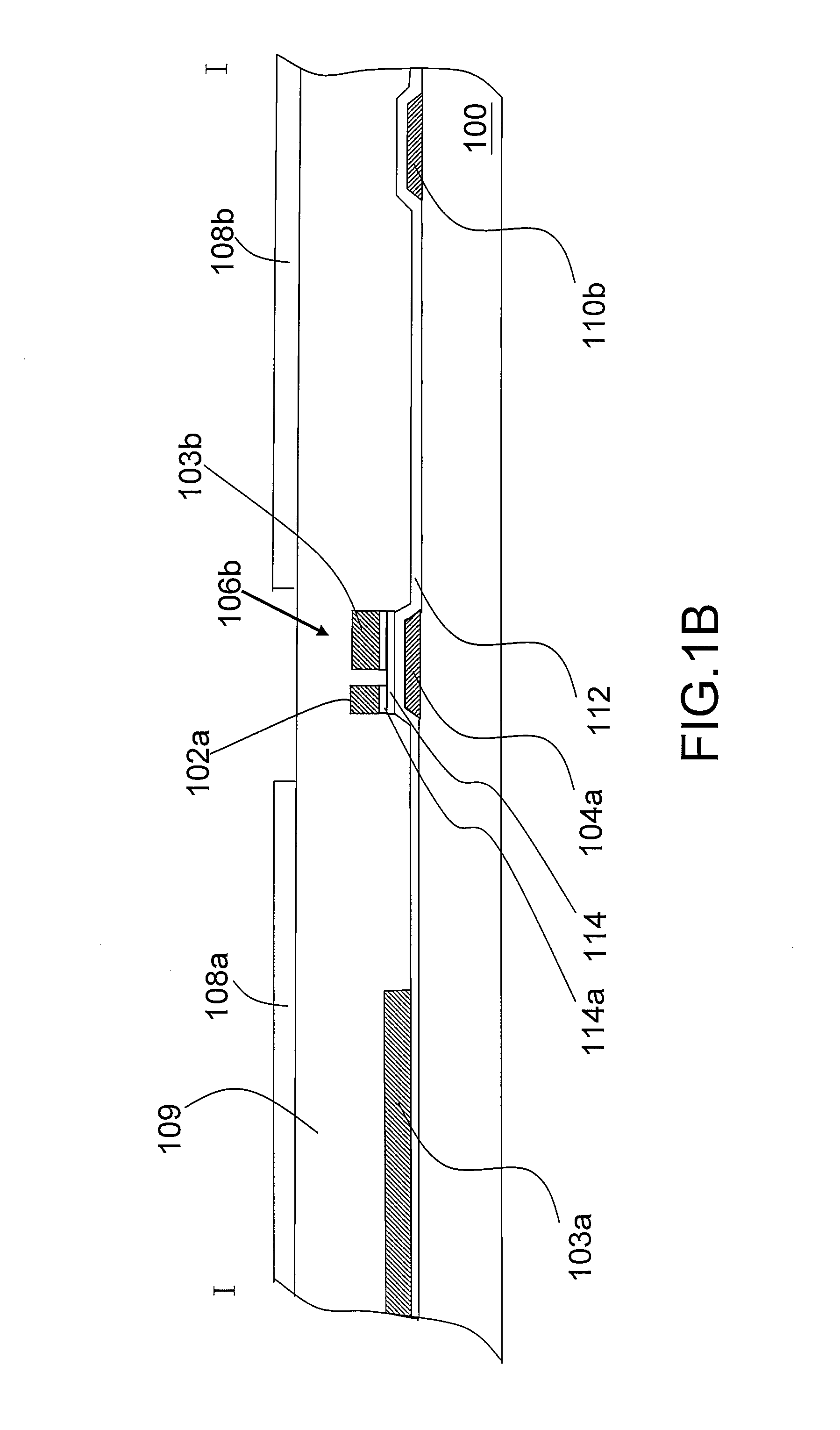Pixel structure
a liquid crystal display and structure technology, applied in non-linear optics, instruments, optics, etc., can solve the problems of reducing cell gap, reducing color washout, and reducing cell gap, so as to reduce color washout, maintain yield and brightness, and solve mura and residual image problems
- Summary
- Abstract
- Description
- Claims
- Application Information
AI Technical Summary
Benefits of technology
Problems solved by technology
Method used
Image
Examples
first embodiment
[0038]FIG. 1A is a top view of a pixel structure according to a first embodiment of the present invention. FIG. 1B is a schematic view along cross-sectional line I-I of FIG. 1A. FIG. 1C is a locally magnified view of area C1 in FIG. 1A. FIG. 1D is a locally magnified view of area C2 in FIG. 1A.
[0039]As shown in FIGS. 1A and 1B, the pixel structure in the present embodiment comprises a substrate 100, a data line 102, a first scan line 104a, a second scan line 104b, a first thin film transistor 106a, a second thin film transistor 106b, a third thin film transistor 106c, a first pixel electrode 108a, a second pixel electrode 108b, a third pixel electrode 108c, a first common line 110a, a second common line 110b and a third common line 110c. The data line 102, the first scan line 104a and the second scan line 104b are disposed over the substrate 100. The first thin film transistor 106a, the second thin film transistor 106b and the third thin film transistor 106c are electrically connect...
second embodiment
[0051]FIG. 3A is a top view of a pixel structure according to a second embodiment of the present invention. FIG. 3B is a schematic view along cross-sectional line II-II of FIG. 3A. In the second embodiment, the components of the pixel structure identical to the ones in the first embodiment are labeled identically. Moreover, only the portions that are different from the first embodiment are described below. In addition, any types of extensions that are applicable to the first embodiment may also be applied to the pixel structure of the second embodiment.
[0052]As shown in FIGS. 3A and 3B, the main difference between the pixel structure in the second embodiment and the one in the first embodiment is that the first width-to-length ratio W1 / L1, the second width-to-length ratio W2 / L2 and the third width-to-length ratio W3 / L3 are all the same. Similarly, the first common line 110a and the second common line 110b are electrically connected to the first voltage V1 and the third common line 1...
PUM
| Property | Measurement | Unit |
|---|---|---|
| width-to-length ratio | aaaaa | aaaaa |
| voltage | aaaaa | aaaaa |
| impedance | aaaaa | aaaaa |
Abstract
Description
Claims
Application Information
 Login to View More
Login to View More - R&D
- Intellectual Property
- Life Sciences
- Materials
- Tech Scout
- Unparalleled Data Quality
- Higher Quality Content
- 60% Fewer Hallucinations
Browse by: Latest US Patents, China's latest patents, Technical Efficacy Thesaurus, Application Domain, Technology Topic, Popular Technical Reports.
© 2025 PatSnap. All rights reserved.Legal|Privacy policy|Modern Slavery Act Transparency Statement|Sitemap|About US| Contact US: help@patsnap.com



